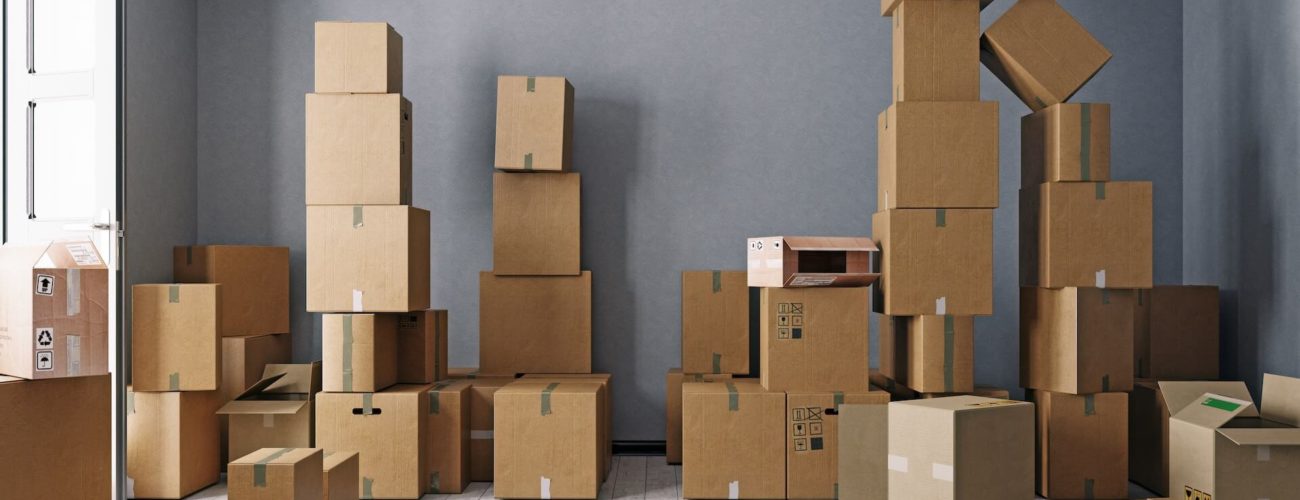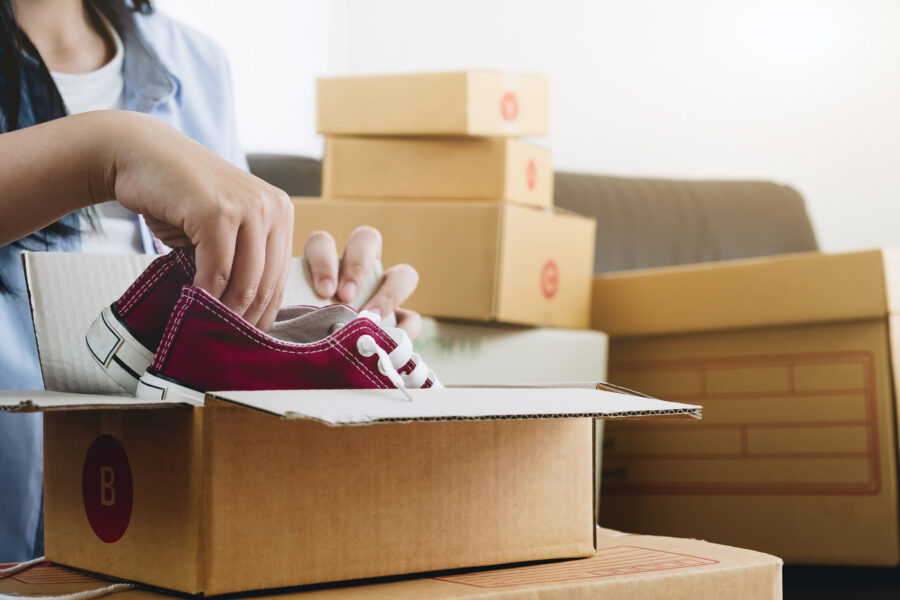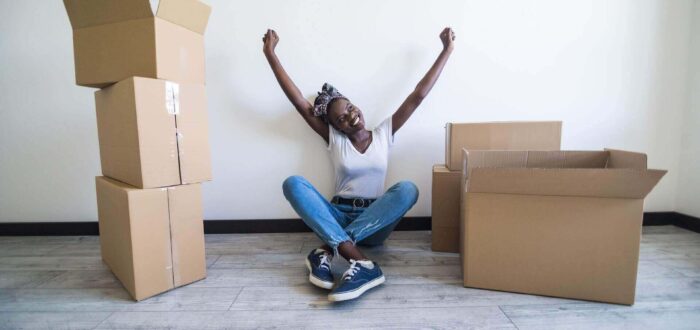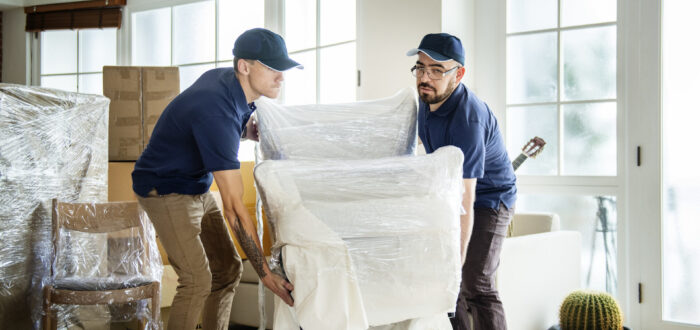

The Art of Packing: How to Pack Efficiently
Posted in How-to,Moving Tips & Tricks on April 19, 2023
When you are preparing for long-distance moving, it’s important to think about every step of the way thoroughly, and knowing how to pack efficiently can leave the stress out of the calculation. If you believe that boxing up is only about tossing stuff into random boxes without organizing them previously, you will quickly see that packing is not that simple. With that in mind, let’s see how you can prepare your belongings for the trip without too much effort.
The easiest way to start packing everything yourself is to put it all on paper. Write down all the items you will move by type, make a list of packing materials, take a picture of your inventory, and keep them in case something gets damaged during the move. Before you relocate furniture and some of the appliances, you want to write down the measurements first to ensure that they can fit through the door. Keep important papers and documents in a safe place, so you can easily find them after relocation starts.
How to Pack Efficiently for a Move Without Stressing Over It
Relocation preparation can take a lot of time and effort, which can often cause a ton of moving stress. If decluttering and sorting through your belongings seems grim to you right now, and you don’t know where to start, we are here to show you how to pack for a move efficiently without a fuss.
Make a Packing Plan
We suggest you start planning 4-6 weeks before moving cross-country. Count all the rooms in your house, and assign them a color – it will be simpler to pack and unpack boxes that way. Organize all of your stuff in piles for packing and decluttering, and your life will be so much easier. Prepare your important papers, bedding, clothes, and hygiene essentials and put them into your personal luggage so that they don’t mix with stuff that will be loaded into the moving truck by cross-country movers.
Gather All the Necessary Packaging Materials
When you have a clear picture of all the things that need to be packed before moving across the country, write down a list of packing materials, like old clothes that you won’t donate, old bedding, and socks that are perfect for stuffing or wrapping glassware. You should also get boxes (new or reusable, but be sure they were kept in a dry environment), bubble wrap, packaging paper, newspaper, durable tape, scissors, waterproof markers and labels, padding supplies, and plastic containers with lids.
If Packing Stuff by Yourself Is Overwhelming, You Can Always Hire Professionals
If all this turns out to be suffocating, you can always hire long-distance movers or professional packers. They will help a great deal, but do your research before you choose a mover. A company with good cross-country moving services will make sure your belongings are packed so they won’t budge in the truck, and they will be accountable for any damages made during transport.

Pack Your Belongings by Room
We suggest you use open and clear spaces for packing and organizing boxes for each room. This way, you will label and stack your boxes easily. With that in mind, let’s go over a short overview of what needs to be done in each room, as well as some tips on how to do it.
Kitchen and Dining Room
The kitchen is the soul of the house, so we want the kitchen packed with care. The best way to start is to go through the pantry by throwing open boxes and food that has short expiration dates to avoid contamination or mess. Remember to clean your appliances and pack them in their original boxes (if you kept them).
If your kitchen cabinets are moving with you, either unscrew them and wrap each component separately or wrap them tightly like they are. Be sure to pack screws in a separate Ziplock bag for each room and label them properly. Taller stools can’t be easily dismantled, so you should wrap their legs with extra care, then you should wrap them whole in bubble wrap.
Fragile items should be wrapped properly, put gently in boxes without extra space in between, and labeled as easily breakable. Wrap glasses in socks to keep them from breaking. Sharp objects should be well-wrapped and secured. Plates should always be packed vertically with an extra layer of crumpled paper around them. When packing dishes, remember that specially designed boxes with dividers can help you keep any dish in one piece.
Living Room
If your current room took a lot of time to assemble, we urge you to take pictures of cables and setups before boxing up the TV, receivers, and other electronics. This makes setting them up later so much easier. If you have extra large towels and blankets, use them to wrap mirrors, pictures, or sensitive art items. If you have an impressive library that you plan to carry with you, wrap each book separately, but be careful not to overpack them in one box, as stacked books can get heavy fast.
Bedroom
Valuable stuff should be packed in boxes with locks and kept with you. If you are moving mattresses, secure them well by wrapping plastic, sheets, or blankets. Bedding and pillows should be well covered up to keep them from dust or getting stained. Toys should be packed in smaller boxes, but be sure not to overpack them – frequently check if the box is still in one piece. Label each box with a different color for each bedroom.
Bathroom
Clearing the bathroom for the move is often overlooked. Many of the necessities are going with you in the personal suitcase, so they are usually packed last. Secure the open items to prevent them from leaking and damaging other things. Medication should be packed and labeled accordingly, and be sure to take your prescribed therapy with you.
What Is the Best Method to Pack Your Clothing?
The best time to go through all of your wardrobes is when you are packing clothes for the relocation. That is why we are suggesting you first declutter your closet. Divide your items into piles to help you decide what to keep, donate to Goodwill or The Salvation Army, and what to sell in a yard sale, second hand or online, or throw away.
After decluttering, we propose you sort all your things by type, which will help immensely during unpacking. Put all the pants together and all the shirts in the same bunch, and label them separately for each closet.
This will help you have a clear picture of how many packing materials you should buy. Get small to medium-sized wardrobe boxes, tape, wrapping and packing paper, plastic ties, and vacuum bags. Suitcases, smaller bags, or hangers can also be used when packing stuff.
Here are some of the most used methods for packing clothing.
- Wrapping hangers – If you want to leave your items on hangers, you should buy wardrobe boxes with racks on top, secure them by wrapping them in groups 5-15, and tie hangers with cable ties.
- Fold method – This method is good for larger pieces in your closet, like autumn jackets, jeans, and sweaters. Fold them and put them in small to medium-sized boxes, but be careful, as the box can easily get too heavy. You can wrap stacked clothes in one larger jacket before putting it into the box and securing them.
- Military roll – The finest way to pack a suitcase, as well as smaller and more delicate items in your closet, like shirts, dresses, or items from silk.
- KonMari method – This method is a vertical strategy for packing your wardrobe, which will make your stuff more accessible and organized. It will also reduce stress, tearing, and wrinkling of your clothes, and who has the will to iron after moving?
- Compressing bulkier stuff for more space – Compress winter and ski goods for extra space in your luggage, as well as your comforters and pillows.
- Drawers – Whether you decide to remove drawers or leave them in your furniture, keep in mind that they are the perfect storage place. Leave smaller stuff in them and secure them with plastic wrap and tape in either case.
You Are Done With Clothes, but How to Pack Shoes?
Looking for some tips on how to pack shoes? If you saved the original boxes and stuffing for some of your shoes, especially boots, now is the right time to use them. Wrap each shoe separately and fill it with extra paper to keep it from bending or breaking in. Use peanut foam to fill the extra space in the box.
Flatter shoes, such as sneakers or flats, can be stuffed with tissue paper or socks. If you don’t have more room in any of your luggage, you can find cheap clear boxes with lids for storing. Shoes before packing should be cleaned properly so that they don’t soil your new home.

How to Prepare Your Furniture for the Move
Figure out the best approach to move your furniture without hurting yourself. You can hire a professional to do it or buy a new piece of furniture when you reach your goal. If you are planning to carry all of your furniture or some of it yourself, these are the tips to protect it from being scratched or damaged.
Buy specially designed sofa and mattress covers, extra cardboard to secure sharp corners and edges, and plastic and bubble wrap. However, be careful, as some materials can leave marks on wood, so gather some of your old sheets and blankets for extra measure.
Before you pick your furniture apart, take some time to clean it and remove anything that can scratch it during the move. Remove furniture legs, knobs, and handles and store them in a Ziplock bag, which should be labeled so they don’t get mixed up. Wrap softer things like decorative pillows, cushions, sofa seats, or back tightly for extra protection. Dismantle your table and bed by removing their legs and headboard. Put them on a flat surface, stack them by size, and wrap them together tightly.
Packing Your Appliances for the Move
Measure the appliances you are taking with you and see if you can carry them out through your doors. Before moving appliances across the room, protect the flooring with some cardboard. Clean everything you are moving, empty the refrigerator, unplug it, and leave it open for 24 hours to eliminate moisture. After that, secure it with plastic wrap and tape to prevent it from opening. Do the same with the stove, washer and dryer, and dishwasher.
Packing Fragile Articles
Mirrors and framed family photos are very fragile things, so be sure to mark them with an X across the glass to prevent them from shattering. The edges should be secured with cardboard and fastened with tape and plastic wrap. Art should be wrapped in softer materials, like old sheets or blankets. You can secure your lamps for the move by wrapping their cords around the base and enveloping them with paper. Put them in the box and secure them with extra paper.

How to Load the Moving Truck
Loading the moving truck is easy if you organize your inventory properly. First, put in larger and bulkier stuff, but spread it evenly throughout the truck. Start with square items, as their flat top surface can be used to stack lighter boxes – just be sure to secure them from slipping. You can barricade this with a well-wrapped and secured mattress or some upholstered furniture you already have secured. Load your sofa vertically – this can be very helpful if you don’t succeed in dismantling it. Lastly, don’t forget to secure everything in the truck with straps. If all this seems overwhelming, you can always get professional packing services.

Use a Suitcase to Bring Your Essentials With You
If you have hired professional movers, be sure to bring all the necessary papers you will need for transactions and insurance. Take all of your important documents as well. Be sure all the stuff you will need in the first days in the new home is packed with you. Each family member should have their suitcase with things for the first days of the move, like clothes they wear the most, personal toiletries, bedding, or even dishes you will use until the moving truck arrives.
If you want some tips from Marie Kondo on how to pack your suitcase, watch the following video.
If All This Fails You, You Can Always Hire Movers
Put all the things you will move on paper, check everything thoroughly, and declutter unnecessary stuff to make your transition easier. This will help you with buying needed materials and save you the trouble of going to the store multiple times. Use waterproof markers and stickers to label everything, especially if something is fragile (like glassware). Load the moving truck with all necessary precautions. Carry your important stuff with you, and remember to plan the first few weeks in the new location.
In the end, if everything is over your head and unimaginable, Cross Country Movers can assist you with this trip. We always help our clients deal with these issues, making their experience much more enjoyable. Don’t hesitate to contact us and let us lift this heavy burden of moving off your shoulders.






